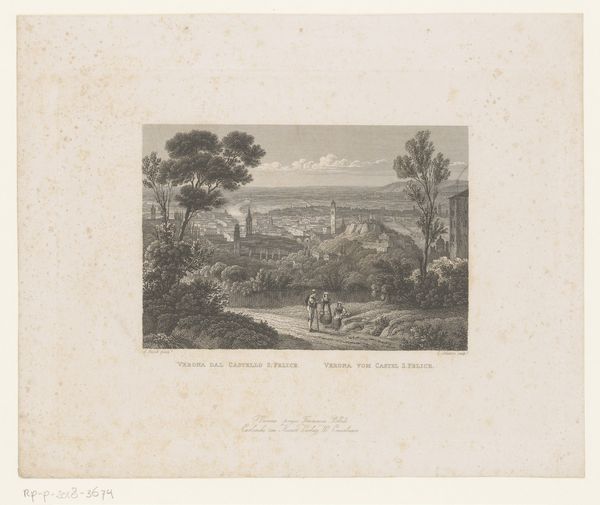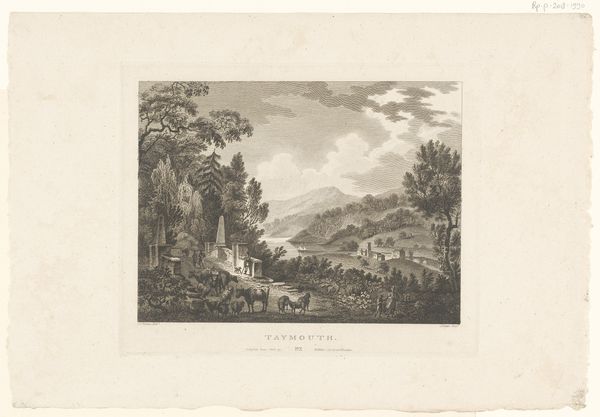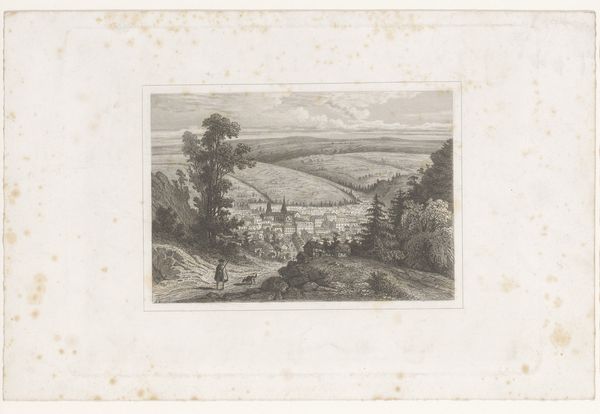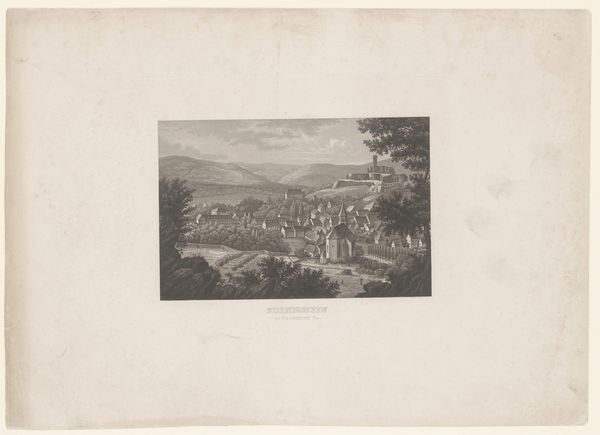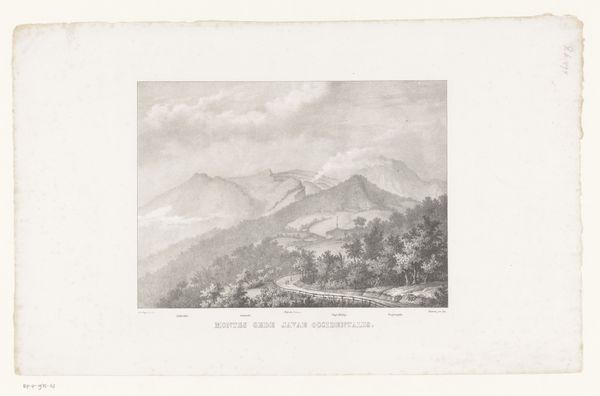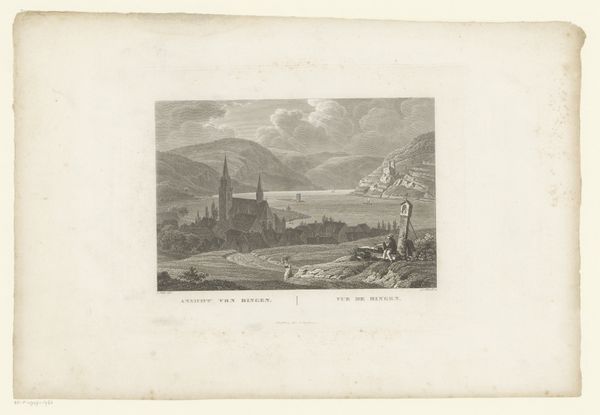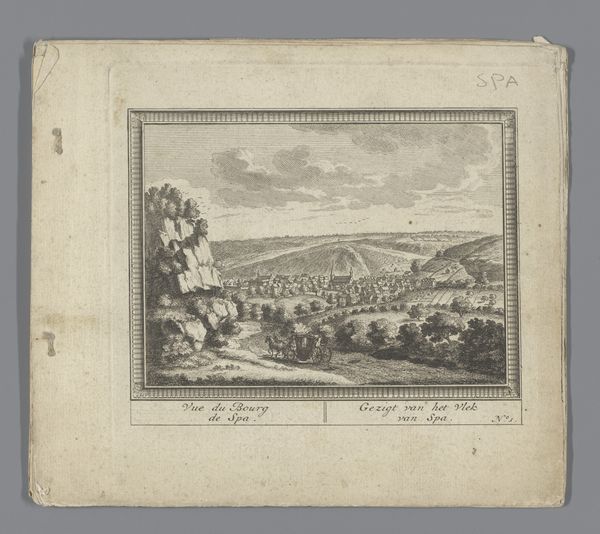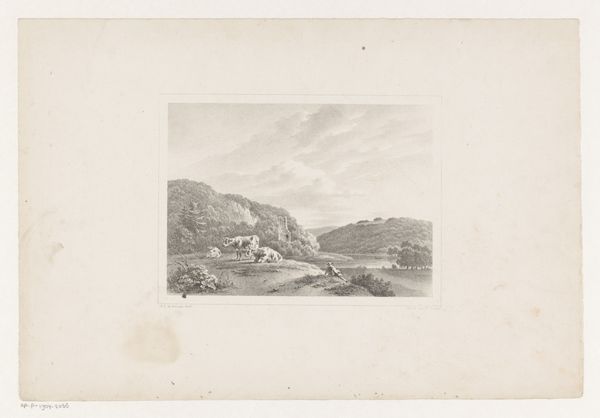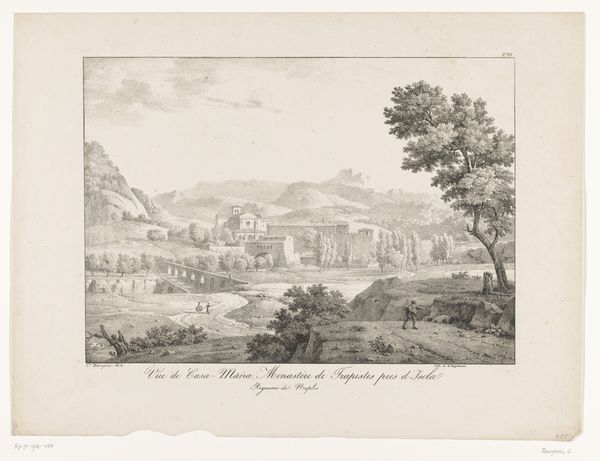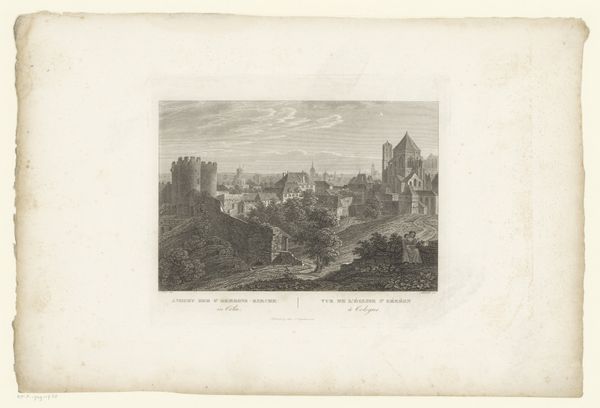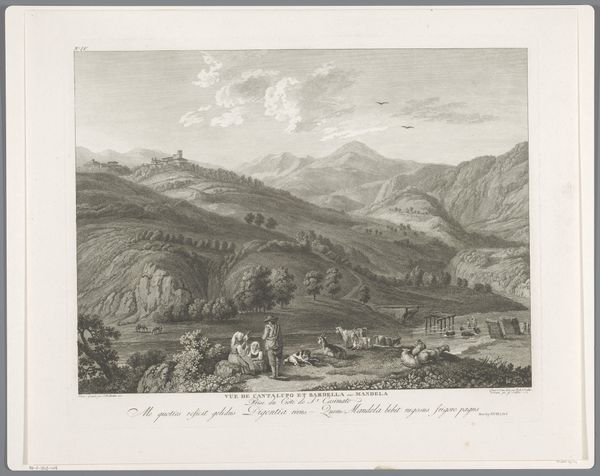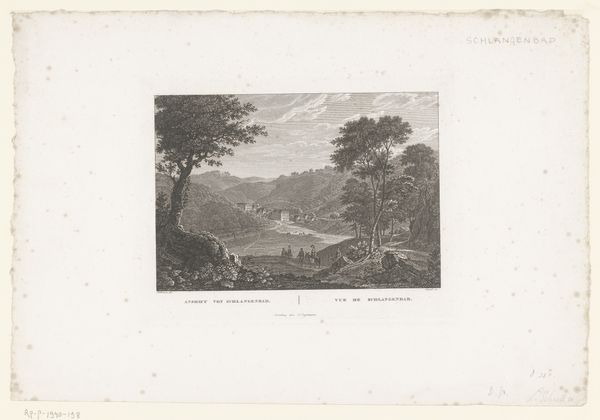
print, etching
# print
#
etching
#
landscape
#
romanticism
#
cityscape
Dimensions: height 197 mm, width 253 mm
Copyright: Rijks Museum: Open Domain
Editor: So, here we have "Gezicht op Schwalbach," a cityscape etching by Ludwig Friedrich Schnell, dating roughly from 1811 to 1845. There's a definite romantic mood, looking down on this quaint little town nestled in the hills. What do you see in this piece, considering the period it was made? Curator: What strikes me is how this etching visualizes the growing interest in landscape and the public's changing relationship to the environment during that era. Remember, this is during the rise of Romanticism. Views like this weren't just picturesque; they shaped ideas about national identity. Editor: National identity? How so? Curator: Consider where an artwork like this would be displayed and consumed. Prints made art more accessible. A view like this could reinforce a sense of pride and belonging, an idea of what it meant to belong to that particular landscape. The idealization of the natural landscape also occurred as urban centers industrialized and expanded. The contrast with idealized depictions of rural life highlighted socio-economic issues while simultaneously evoking sentimental, nationalistic feelings. Editor: So it's not just a pretty picture; it's participating in a broader cultural and, dare I say, political, project? Curator: Exactly! Consider the institutional context – the Rijksmuseum. It became a place of preservation for artistic representations that helped craft narratives of cultural significance. The art in such a collection actively contributed to the development and maintenance of specific ideas within society. Are there elements that strike you in particular regarding this dynamic? Editor: I didn't think about it like that. I guess the choice of what to depict and how to depict it has real power, helping to forge identity and meaning on a national scale. Curator: Indeed, and by reflecting on art this way, we can uncover hidden ideologies, or previously unconsidered viewpoints of this visual and socio-political history. Editor: It's a new lens to view art! Thank you for that perspective.
Comments
No comments
Be the first to comment and join the conversation on the ultimate creative platform.
